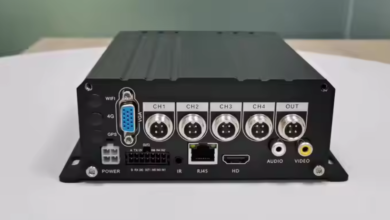
What is the Standard Size and Shape of Surveying Arrows?
Introduction to Surveying Arrows
arrow in surveying represent one of the most fundamental tools in the field of land surveying and engineering. These specialized markers serve as essential components for accurate distance measurement and boundary identification across various terrains and project sites.
Professional surveyors rely heavily on these precision-crafted instruments to maintain accuracy in their work. The standardization of surveying arrows ensures consistency across different projects and geographical locations, making them indispensable for modern surveying practices.
The importance of proper sizing and shape cannot be overstated in surveying applications. Each arrow must meet specific dimensional requirements to function effectively with surveying equipment and maintain visibility under various environmental conditions.
Standard Size Specifications
The standard surveying arrow typically measures 14 inches in total length, representing the industry-accepted dimension for optimal functionality. This length provides the perfect balance between visibility and portability for field operations.
Width specifications generally range from 0.25 to 0.375 inches, depending on the specific manufacturer and intended application. The consistent width ensures proper insertion into various soil types while maintaining structural integrity during use.
Thickness measurements usually fall between 0.125 to 0.1875 inches for most standard surveying arrows. This thickness specification provides adequate strength to withstand repeated use while remaining lightweight enough for extended field work.
Weight considerations play a crucial role in surveying arrow design. Most standard arrows weigh between 3 to 5 ounces, allowing surveyors to carry multiple units without excessive burden during long field sessions.
The pointed tip typically extends 2 to 3 inches from the main shaft, designed specifically for easy ground penetration across different soil conditions. This standardized tip length ensures consistent performance regardless of terrain type.
See also: Tunnel Radio Technology Advancements for Underground Mines
Shape and Design Requirements
The classic surveying arrow features a distinctive pointed tip design that facilitates easy insertion into various ground surfaces. This aerodynamic shape reduces resistance during insertion while maintaining stability once positioned.
The shaft design incorporates a straight, uniform profile that ensures accurate alignment with surveying instruments. Any deviation from this straight design could result in measurement errors and compromised survey accuracy.
Head configurations vary between different arrow types, with some featuring flat heads while others incorporate angled or curved designs. The choice depends on specific surveying requirements and environmental conditions.
Notch specifications along the shaft serve important functional purposes. These precisely positioned notches allow for easy retrieval and provide reference points for depth measurement during use.
The overall aerodynamic profile contributes to the arrow’s effectiveness in windy conditions. A well-designed surveying arrow maintains its position even when subjected to moderate wind forces during outdoor operations.
Material Composition and Durability
Steel construction represents the most common material choice for surveying arrows due to its excellent strength-to-weight ratio. High-carbon steel provides superior durability while maintaining the flexibility needed for field applications.
Stainless steel variants offer enhanced corrosion resistance, making them ideal for use in coastal areas or regions with high humidity levels. These arrows maintain their structural integrity even after prolonged exposure to moisture.
Powder coating applications provide additional protection against environmental elements while improving visibility. The coating process creates a durable surface that resists chipping and fading under normal use conditions.
Heat treatment processes enhance the overall strength and longevity of surveying arrows. Properly treated arrows can withstand thousands of insertion and removal cycles without significant wear.
Quality control measures during manufacturing ensure each arrow meets strict durability standards. Reputable manufacturers subject their products to rigorous testing protocols before market release.
Color Standards and Visibility Requirements
Bright orange represents the most widely accepted color standard for surveying arrows, providing maximum visibility across various environmental conditions. This high-visibility color ensures easy location and retrieval during field operations.
Fluorescent coatings enhance visibility during low-light conditions, making arrows easier to spot during early morning or late afternoon surveying sessions. These specialized coatings maintain their brightness even after extended outdoor exposure.
Reflective elements incorporated into arrow design improve visibility during nighttime operations. Some specialized arrows feature reflective bands or tips that enhance detection when illuminated by artificial light sources.
Color consistency across different manufacturers helps maintain uniformity in surveying operations. Standardized color specifications ensure that arrows from various suppliers integrate seamlessly into existing equipment sets.
Weather resistance of color coatings prevents fading and ensures long-term visibility. High-quality finishes maintain their original appearance even after prolonged exposure to UV radiation and harsh weather conditions.
Manufacturing and Quality Standards
Precision manufacturing processes ensure each surveying arrow meets exact dimensional specifications. Computer-controlled machinery produces arrows with tolerances measured in thousandths of an inch for optimal consistency.
Quality assurance protocols involve multiple inspection stages throughout the manufacturing process. Each arrow undergoes dimensional verification, straightness testing, and surface finish evaluation before packaging.
Industry certifications validate the quality and reliability of surveying arrows. Reputable manufacturers obtain relevant certifications to demonstrate compliance with professional surveying standards.
Material traceability systems track the source and composition of raw materials used in arrow production. This documentation ensures consistency and helps identify potential issues if they arise.
Testing procedures evaluate arrow performance under simulated field conditions. Manufacturers conduct insertion tests, durability assessments, and visibility evaluations to verify product performance.
Different Types of Surveying Arrows
Standard steel arrows represent the most common type used in general surveying applications. These versatile tools provide reliable performance across a wide range of soil conditions and project requirements.
Heavy-duty arrows feature reinforced construction for use in challenging terrain or rocky soil conditions. These specialized arrows incorporate thicker shafts and hardened tips to withstand extreme insertion forces.
Lightweight arrows utilize advanced materials and design techniques to reduce overall weight while maintaining functionality. These arrows prove particularly valuable during extended field surveys where weight considerations are critical.
Specialized tip configurations address specific soil conditions or application requirements. Some arrows feature chisel tips for hard ground, while others incorporate spiral designs for improved holding power in loose soil.
Magnetic arrows incorporate magnetized components that enhance compatibility with certain surveying instruments. These specialized tools provide improved accuracy in specific measurement applications.
Proper Usage and Handling
Correct insertion technique ensures optimal arrow performance and extends service life. Surveyors should apply steady, controlled pressure during insertion while maintaining proper alignment with surveying lines.
Retrieval methods should minimize damage to both arrows and surrounding terrain. Proper extraction techniques involve controlled lifting motions that prevent bending or breaking of the arrow shaft.
Handling procedures during transport protect arrows from damage and maintain their precision characteristics. Surveyors should use appropriate carrying cases or holders to prevent contact damage between arrows.
Safety considerations include proper awareness of arrow locations to prevent accidental contact injuries. Bright colors and visibility enhancements help ensure arrow locations remain apparent to all personnel in the area.
Cleaning protocols remove debris and contaminants that could affect arrow performance or longevity. Regular cleaning maintains the arrows’ appearance and prevents corrosion in metal components.
Storage and Maintenance
Proper storage conditions protect surveying arrows from environmental damage and maintain their precision characteristics. Arrows should be stored in dry, temperature-controlled environments when not in use.
Organizational systems help surveyors maintain inventory control and ensure arrows remain readily available for field use. Systematic storage arrangements reduce time spent locating specific arrows during project preparation.
Inspection routines identify potential issues before they affect surveying accuracy. Regular examination of arrows helps detect wear, damage, or dimensional changes that could compromise performance.
Maintenance procedures extend arrow service life and maintain optimal performance characteristics. Simple maintenance tasks include cleaning, inspection, and minor repairs as needed.
Replacement criteria help surveyors determine when arrows should be retired from service. Worn or damaged arrows should be replaced promptly to maintain surveying accuracy and safety.
Cost Considerations
Initial purchase costs vary depending on arrow specifications, materials, and manufacturer. Standard steel arrows typically represent the most economical choice for general surveying applications.
Bulk purchasing options often provide significant cost savings for surveying firms that use large quantities of arrows. Volume discounts can substantially reduce the per-unit cost of arrows.
Long-term value considerations include durability, performance, and replacement frequency. Higher-quality arrows may justify increased initial costs through extended service life and improved reliability.
Budget planning should account for regular arrow replacement as part of ongoing operational expenses. Surveying firms should establish replacement schedules based on usage patterns and wear rates.
Cost comparison analysis helps identify the most economical arrow options for specific applications. Factors to consider include initial cost, expected service life, and performance characteristics.
Regulatory Compliance
Industry standards govern surveying arrow specifications to ensure consistency and reliability across different applications. Professional surveying organizations maintain these standards through regular review and updates.
Safety regulations address arrow design requirements that minimize risks to personnel and the public. Compliance with safety standards ensures arrows meet minimum performance criteria for professional use.
Environmental considerations influence arrow design and material selection. Regulations may specify requirements for non-toxic materials or biodegradable components in sensitive areas.
Documentation requirements may mandate specific arrow types for certain surveying applications. Surveyors must ensure their arrows meet all applicable regulatory requirements for their projects.
Certification processes verify that arrows meet relevant industry standards and regulatory requirements. Certified products provide assurance of quality and compliance for professional surveying applications.
Certified Material Testing Products (Certified MTP) is a leading supplier of construction materials testing equipment and laboratory supplies in the United States. They offer a comprehensive range of products for testing concrete, asphalt, aggregate, soil, and cement, catering to both field and laboratory applications. However, regardless of whether they are preferred or not, the underlying concept behind these tools is similar: achieving a polished, shiny, and permanent effect. Whether new to stucco or a seasoned pro, investing in quality tools and learning the nuances of their use is what will help you perfect your craft.
Frequently Asked Questions (FAQ)
What is the most common length for surveying arrows? The standard length for most surveying arrows is 14 inches, which provides optimal visibility and functionality for general surveying applications.
Why are surveying arrows typically orange in color? Orange provides maximum visibility across various environmental conditions and lighting situations, making arrows easier to locate and retrieve during field operations.
How thick should a standard surveying arrow be? Most surveying arrows measure between 0.125 to 0.1875 inches in thickness, providing adequate strength while maintaining lightweight portability.
What materials are commonly used for surveying arrows? High-carbon steel and stainless steel represent the most common materials, offering excellent durability and corrosion resistance for field applications.
How much do surveying arrows typically weigh? Standard surveying arrows weigh between 3 to 5 ounces each, allowing surveyors to carry multiple units without excessive burden during field work.
Can surveying arrows be reused multiple times? Yes, quality surveying arrows are designed for repeated use and can withstand hundreds of insertion and removal cycles when properly maintained.
What is the purpose of notches on surveying arrows? Notches serve multiple purposes including easy retrieval, depth reference points, and improved grip for handling during field operations.
How should surveying arrows be stored when not in use? Arrows should be stored in dry, temperature-controlled environments using appropriate carrying cases or organized storage systems to prevent damage.
Are there different types of tips available for surveying arrows? Yes, various tip configurations are available including standard points, chisel tips for hard ground, and spiral designs for improved holding power.
How often should surveying arrows be replaced? Replacement frequency depends on usage patterns and wear rates, but arrows should be retired when they show signs of significant wear, damage, or dimensional changes that could affect accuracy.
This comprehensive guide provides essential information about surveying arrow standards, helping professionals make informed decisions about tool selection and usage for their surveying projects.




